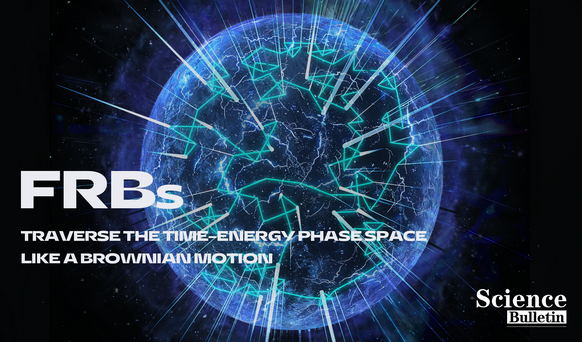Fast Radio Bursts: Stochastic Eruptions from the Deep Universe
Fast radio bursts (FRBs) represent the most intense bursts in the radio universe, releasing in a millisecond the same amount of energy that could power human society for a trillion years.
Since their first discovery in 2007, FRBs have garnered significant attention, recently the 2023 Shaw Prize in Astronomy was awarded to Matthew Bailes et al. for the discovery of fast radio bursts. These extreme burst events are one of the most enigmatic phenomena in astronomy and physics, and their origin remains an unsolved mystery.
Causality dictates that FRB sources must be smaller than cdt in size, where c is the speed of light and dt is the duration of the FRB burst. For a typical burst lasting 1 millisecond, this implies a region smaller than 300 kilometers, indicating that FRB sources might be compact objects like neutron stars or black holes.
Isolated compact objects would suggest a periodic nature; however, extensive searches for periodicity on millisecond to second scales have all failed, prompting a re-evaluation of FRB emission mechanisms.
A research team led by Professor Di Li from the National Astronomical Observatories of the Chinese Academy of Sciences (NAOC) has introduced an innovative approach, systematically analyzing active FRBs' behavior in the time-energy phase space.
By quantifying the randomness and chaos within burst event sequences using "Pincus Index" and "Lyapunov Exponent," and comparing FRBs to other common physical events like pulsars, earthquakes, and solar flares.
Typically, the unpredictability of a random sequence is constant over time, akin to rolling coin - the outcome of each roll bears no link to the previous one. In chaotic systems, unpredictability exponentially increases over time; while we can roughly estimate the weather in the coming hour, it's challenging to predict next week's conditions accurately - the longer the interval, the greater the uncertainty.
In this study, the team found that in the randomness - chaos phase space, FRBs exhibit clear randomness akin to a random walk, with lower chaos, distinctly different from phenomena such as earthquakes and solar flares, which demonstrate notable chaos. The pronounced randomness of FRB emissions suggests a combination of multiple emission mechanisms or locations.
Professor Bing Zhang, a theoretical expert in the field of fast radio bursts from the University of Nevada, USA, published a commentary in the same issue of the journal, calling this 'innovative' approach a prompt for theorists to deeply consider the physical mechanisms behind the bursting events. Further application to the large data set from FAST will test the universality of the physical laws it reveals.
With the continuous advancement of technology and the powerful observational capabilities of FAST telescope, we are closer to accurately capturing these mysterious cosmic signals and delving deeper into the enigmas.
This study was published as a cover story of Science Bulletin, dated April 12, 2024, and can be accessed at https://www.sciencedirect.com/science/article/pii/S2095927324000793

Image: An artist's impression illustrates a compact object’s generating FRBs. Green lines connecting the bursts indicate a random walk path, symbolizing the stochastic nature of fast radio burst activity. (Credit: OPENVERSE & Di Li's team)
Media Contact:
Prof. XU Ang
Email: annxu@nao.cas.cn
Web: http://english.nao.cas.cn